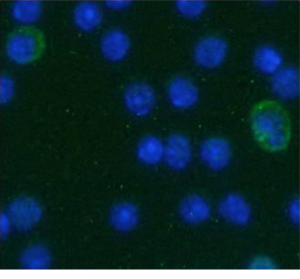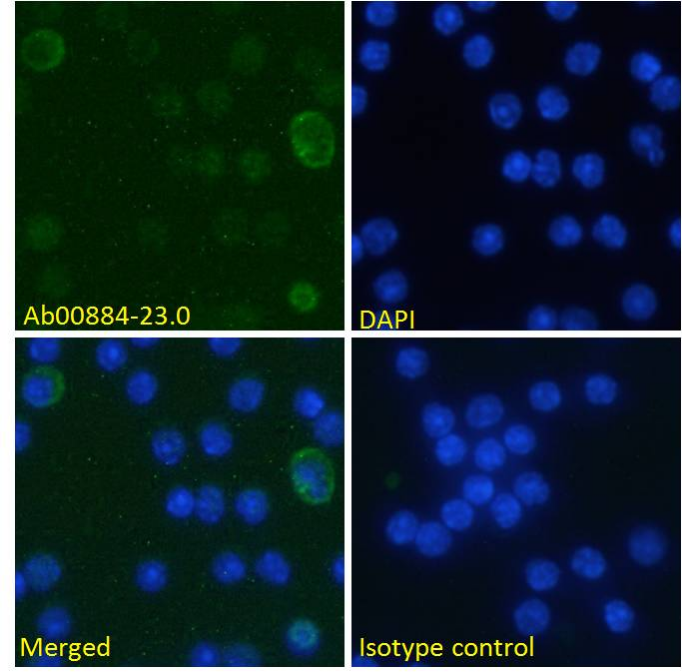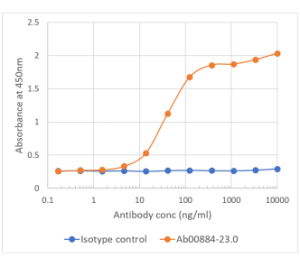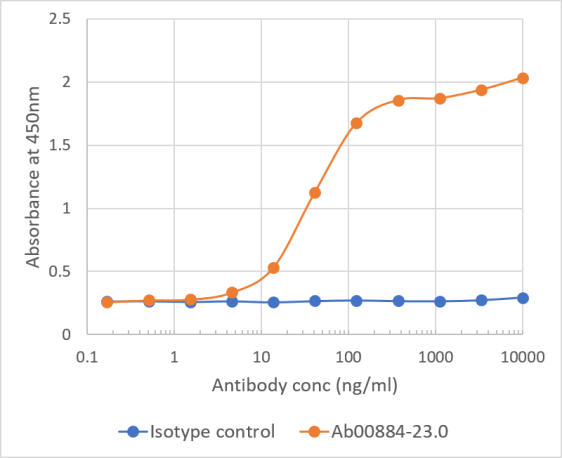![绝对抗体/抗B7-H3[MJ18]/200μg/Ab00884-2.3](https://www.ebiomall.cn/images/no_picture.gif)
UniProt Accession Number of Target Protein: Q8VE98
Alternative Name(s) of Target: B7H3; CD276Immunogen: This antibody was generated by immunizing Sprague Dawley rats with B7-H3-Ig, consisting of the extracellular domain (aa1–242 of mouse B7-H3) linked to the Fc portion of mouse IgG2a, emulsified in CFA (Difco). The antibody was selected by its reactivity to mouse B7-H3-transfected cells, but not to parental cells by flow cytometry.
Specificity: This antibody binds to mouse B7-H3 and does not react with other B7-family molecules.
Application Notes: This antibody has been used to detect murine B7-H3 by flow cytometry. It blocks B7-H3 signalling and can supress priming of Th2-responses and thereby the development of asthmatic responses in an ovalbumin-induced asthma model in BALB/c mice.
Antibody first published in:Nagashima et al.B7-H3 contributes to the development of pathogenic Th2 cells in a murine model of asthma.J Immunol. 2008 Sep 15;181(6):4062-71PMID:18768862Note on publication:Describes the generation and initial characterisation of this antibody.


Immunofluorescence staining of fixed mouse splenocytes with anti-B7-H3 (CD276) antibody MJ18 (Ab00884) Immunofluorescence analysis of paraformaldehyde fixed mouse (Mus musculus) splenocytes on Shi-fix™ coverslips, permeabilized with 0.15% Triton stained with the chimeric rabbit version of MJ18 (Ab00884-23.0) at 10 µg/ml for 1h followed by Alexa Fluor® 488 secondary antibody (1 µg/ml), showing weak membrane staining of a subset of cells. The nuclear stain is DAPI (blue). Panels show from left-right, top-bottom Ab00884-23.0, DAPI, merged channels and an isotype control. The isotype control was stained with an anti-Fluorescein antibody (Ab102-23.0) followed by Alexa Fluor® 488 secondary antibody


Binding curve of anti-B7-H3 antibody MJ18 (Ab00884-23.0) to mouse B7-H3-Fc fusion protein ELISA Plate coated with mouse B7-H3-Fc fusion protein (Pr00158-1.9) at a concentration of 5 µg/ml. A 3-fold serial dilution from 10,000 to 0.1 ng/ml was performed using Ab00884-23.0. For detection, a 1:4000 dilution of HRP-labelled goat anti-rabbit antibody (Bio-Rad) was used.



